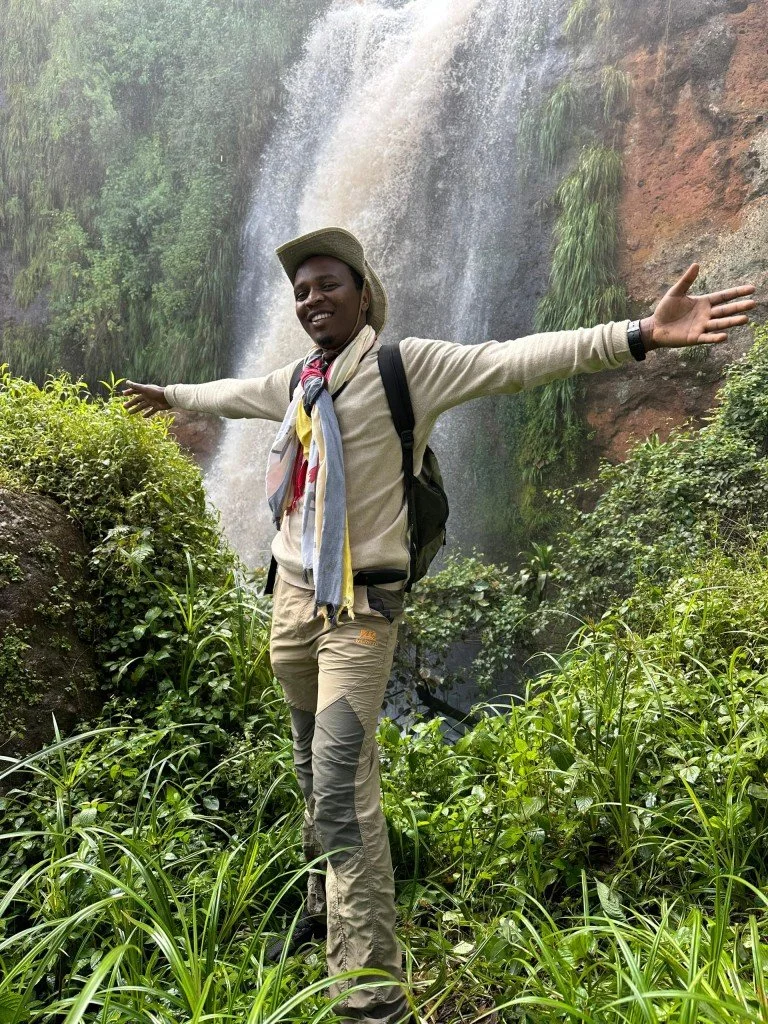KAPCHORWA WILDERNESS HIKE
Step Into the Timeless Life of Mount Elgon’s Cave Dwellers
This unforgettable adventure takes you deep into the remote highlands of Kapchorwa, where time seems to slow down and nature is in the lead. Hike through hidden valleys, cross glistening streams and meet the modern-day cave dwellers who live simply, in harmony with the land and their animals.
No matter if you’re a seasoned explorer or just a curious traveler, the Kapchorwa Wilderness Hike offers both challenge and reflection.
A rare glimpse into a timeless way of life on Mount Elgon’s slopes.
Quick activity facts
| Quick facts | Details |
|---|---|
| Duration | Full-day hike (9-10 hours) or 3-4 hour drive & short walk |
| Distance | Approxiametely 25 kilometers for the full hike |
| Difficulty | Challenging terrain - suitable for experienced hikers |
| Start & end point | Home of Friends Guesthouse, Kapchorwa |
| Price | $40 per person (1-2 pax) | $35 per person (3-4 pax) | $30 per person (5-8 pax) Shorter drive-/walk option from $25 per person Children under 16: 50% discount |
| Includes | Professional guide, packed lunch, water, snacks and emergency transport on standby |
Highlights of the Kapchorwa Wilderness Hike
1. Hidden Waterfalls & Wild Landscapes
From the lush valleys below Kaptokwoi and Atar waterfalls to open ridge views stretching across Uganda’s plains, this hike immerses you in the raw beauty of Mount Elgon’s wilderness. You’ll experience the peaceful rhythm of rural life, where farmers greet you warmly and kids wave from distant hills.
2. Meet the Cave Dwellers
At the heart of this trail lies a remarkable encounter: the modern-day cave people of Kapchorwa. Living simply, relying on nature and their cattle, they embody a traditional lifestyle that has endured for generations. Visitors are welcomed warmly, and their appreciation often supports small but meaningful improvements in the Community, such as buying new clothes or planting a tree together.
3. Cultural Glimpses & Everyday Life
As you traverse farmlands and villages, you may cross paths with traditional ceremonies, especially during the even-year circumcision season (December). Your guide will share stories and insights that reveal the strength, humor and adaptability of the Sebei people living in these hills.
Why Choose the Kapchorwa Wilderness Hike?
This is one of Uganda’s most unique wilderness adventures. Remote, scenic and close to people’s hearts. The hike invites on how people live in harmony with nature, far from the noise of modern life.
With your participation, you directly support native guides and the small communities along the route.
“This hike is a bridge between worlds — nature, history and humanity in one journey.”
Meet Your Guide
🥾 Shadrack Tongos – The Wilderness Storyteller
Born and raised in the Kapchorwa hills, Shadrack has explored every corner of Mount Elgon since childhood. As both a guide and storyteller, he combines deep local knowledge with an easy-going sense of humor and a gift for connecting people. Trusted by the cave dwellers and neighboring families, his presence opens doors that remain closed to most travelers.
What to Bring🎒
Strong hiking shoes and comfortable clothes
Hat, sunscreen, and rain jacket
Water bottle (refills available at Home of Friends)
Camera for capturing unique moments
A spirit of curiosity and respect
Responsible Travel: Visiting the Cave People
Your visit is respectful and non-intrusive. We approach the Community as guests, not spectators. Encounters are based on trust and friendship and your Shadrack ensures that interactions remain dignified and positive for everyone involved. All visits are done with prior agreement and small tips or contributions go directly to the families visited.
Ready to Discover the Hidden Side of Mount Elgon?
Book your Kapchorwa Wilderness Hike and experience one of Uganda’s most remote and thought-provoking adventures.















